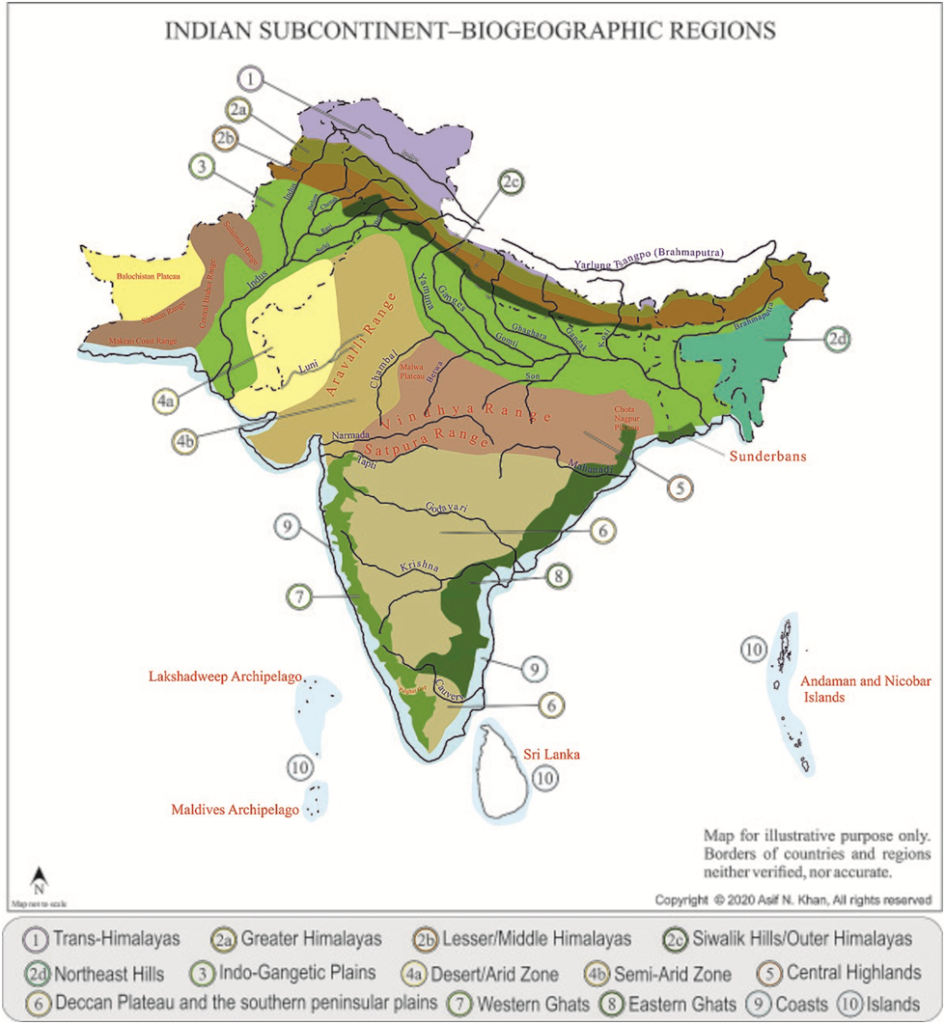
The physiography and climate of India play a significant role in nurturing the biological diversity of the country. India’s diverse topography and varied climatic conditions have created different types of habitats that support a wide range of plant and animal species.
Physiography refers to the physical features of the land, including its terrain, elevation, and geological structure. India’s physiography is highly diverse, ranging from high mountain ranges in the north to tropical forests in the south. The country is home to several major biomes, including deserts, grasslands, tropical rainforests, and alpine ecosystems. This wide range of habitats has contributed to the evolution and survival of a vast array of plant and animal species.
For example, the Himalayas, with their varying altitudes and climatic zones, support a range of flora and fauna, from temperate forests in the lower regions to alpine vegetation at higher elevations. The Western Ghats and the Eastern Ghats, along with their associated hill ranges, provide unique ecosystems with high biodiversity.
Climate is another crucial factor in explaining the biological diversity of India. The country has a tropical climate with distinct seasonal variations. The monsoon season brings heavy rainfall, which is essential for the growth of many plant species. The combination of wet and dry seasons provides favorable conditions for a variety of plant species and supports the breeding and migration of various animal species.
The hot and humid climate of the country’s coastal regions supports the growth of mangroves and other water-dependent species. The cooler mountainous regions of India are home to a variety of alpine flora and fauna.
Thus, India’s biological diversity is a result of the interaction between its physiography and climate, which create diverse habitats and ecological niches for a wide range of plant and animal species. This diversity has led to the evolution of unique ecosystems and species, making India one of the world’s biodiverse regions and an important center for conservation and research in the field of biodiversity and ecology.
